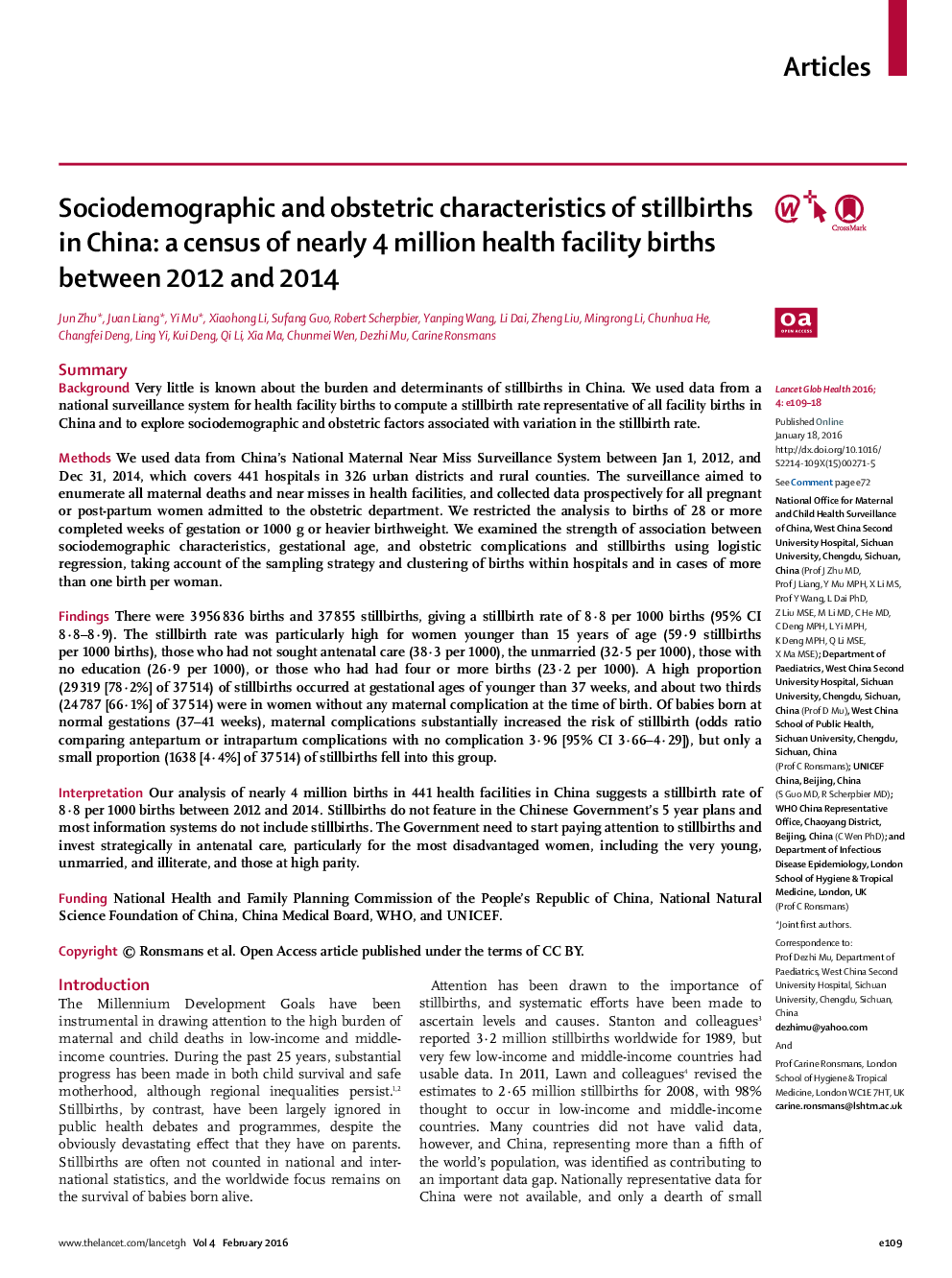| Article ID | Journal | Published Year | Pages | File Type |
|---|---|---|---|---|
| 3408906 | The Lancet Global Health | 2016 | 10 Pages |
SummaryBackgroundVery little is known about the burden and determinants of stillbirths in China. We used data from a national surveillance system for health facility births to compute a stillbirth rate representative of all facility births in China and to explore sociodemographic and obstetric factors associated with variation in the stillbirth rate.MethodsWe used data from China's National Maternal Near Miss Surveillance System between Jan 1, 2012, and Dec 31, 2014, which covers 441 hospitals in 326 urban districts and rural counties. The surveillance aimed to enumerate all maternal deaths and near misses in health facilities, and collected data prospectively for all pregnant or post-partum women admitted to the obstetric department. We restricted the analysis to births of 28 or more completed weeks of gestation or 1000 g or heavier birthweight. We examined the strength of association between sociodemographic characteristics, gestational age, and obstetric complications and stillbirths using logistic regression, taking account of the sampling strategy and clustering of births within hospitals and in cases of more than one birth per woman.FindingsThere were 3 956 836 births and 37 855 stillbirths, giving a stillbirth rate of 8·8 per 1000 births (95% CI 8·8–8·9). The stillbirth rate was particularly high for women younger than 15 years of age (59·9 stillbirths per 1000 births), those who had not sought antenatal care (38·3 per 1000), the unmarried (32·5 per 1000), those with no education (26·9 per 1000), or those who had had four or more births (23·2 per 1000). A high proportion (29 319 [78·2%] of 37 514) of stillbirths occurred at gestational ages of younger than 37 weeks, and about two thirds (24 787 [66·1%] of 37 514) were in women without any maternal complication at the time of birth. Of babies born at normal gestations (37–41 weeks), maternal complications substantially increased the risk of stillbirth (odds ratio comparing antepartum or intrapartum complications with no complication 3·96 [95% CI 3·66–4·29]), but only a small proportion (1638 [4·4%] of 37 514) of stillbirths fell into this group.InterpretationOur analysis of nearly 4 million births in 441 health facilities in China suggests a stillbirth rate of 8·8 per 1000 births between 2012 and 2014. Stillbirths do not feature in the Chinese Government's 5 year plans and most information systems do not include stillbirths. The Government need to start paying attention to stillbirths and invest strategically in antenatal care, particularly for the most disadvantaged women, including the very young, unmarried, and illiterate, and those at high parity.FundingNational Health and Family Planning Commission of the People's Republic of China, National Natural Science Foundation of China, China Medical Board, WHO, and UNICEF.
